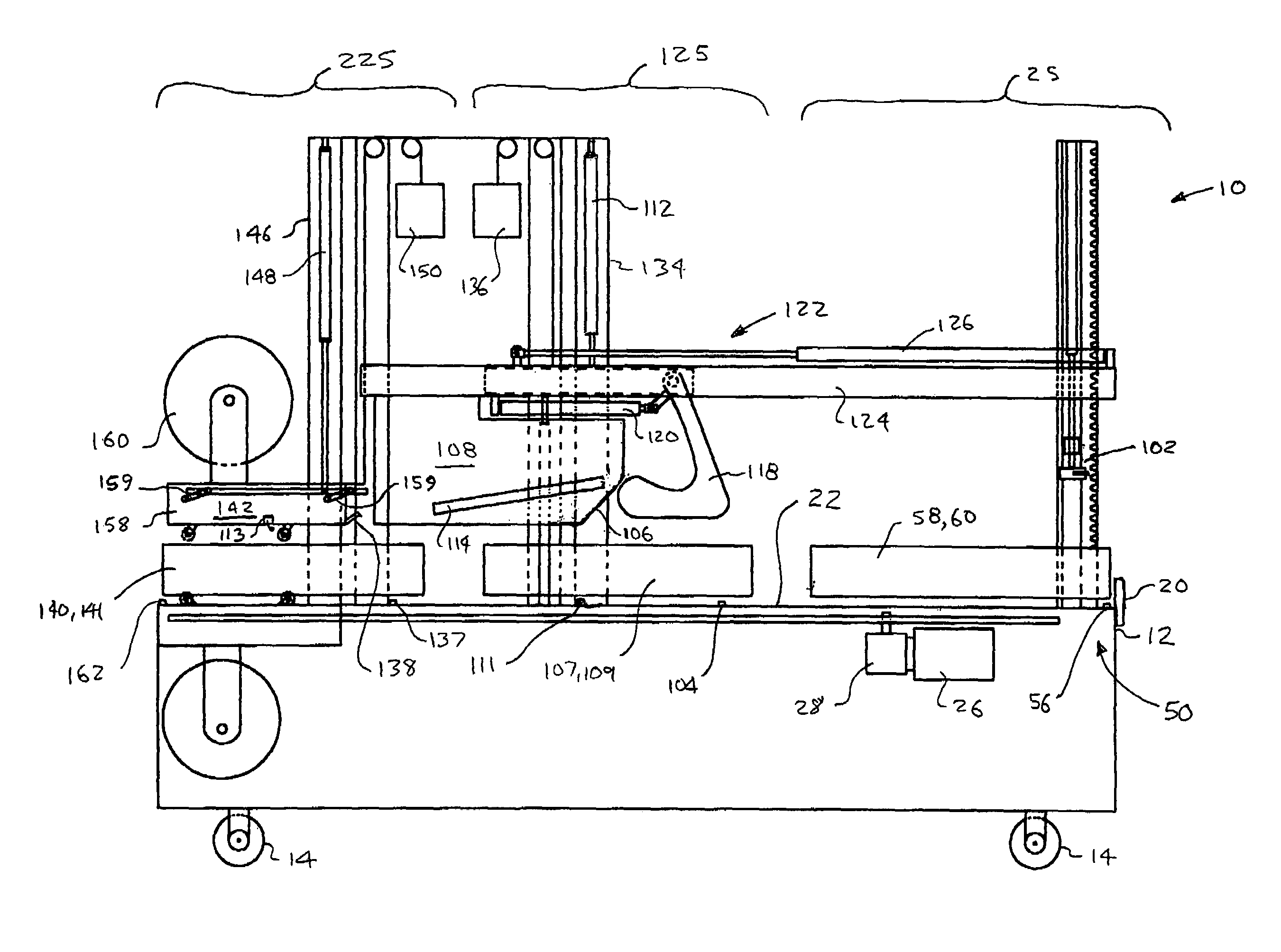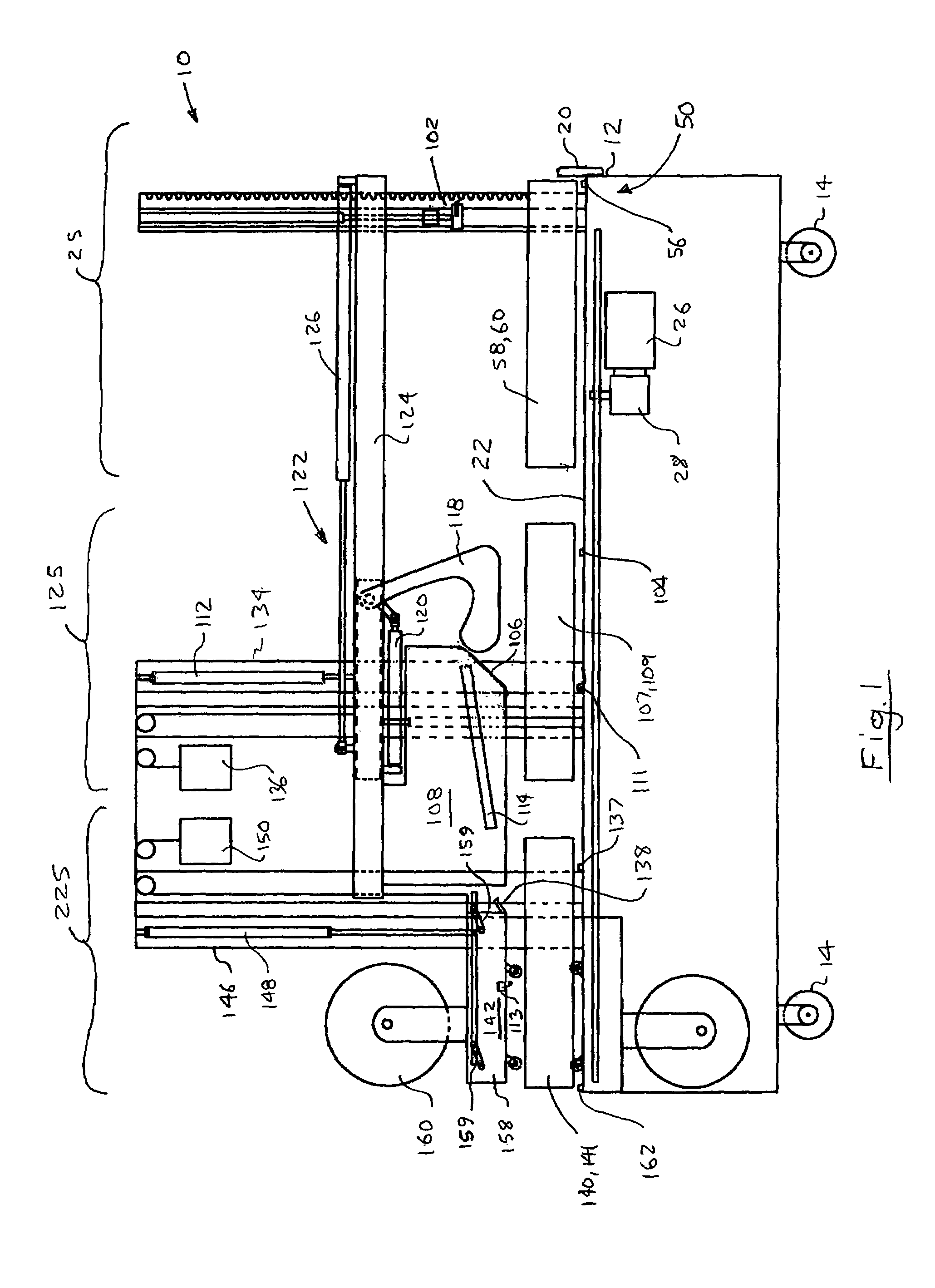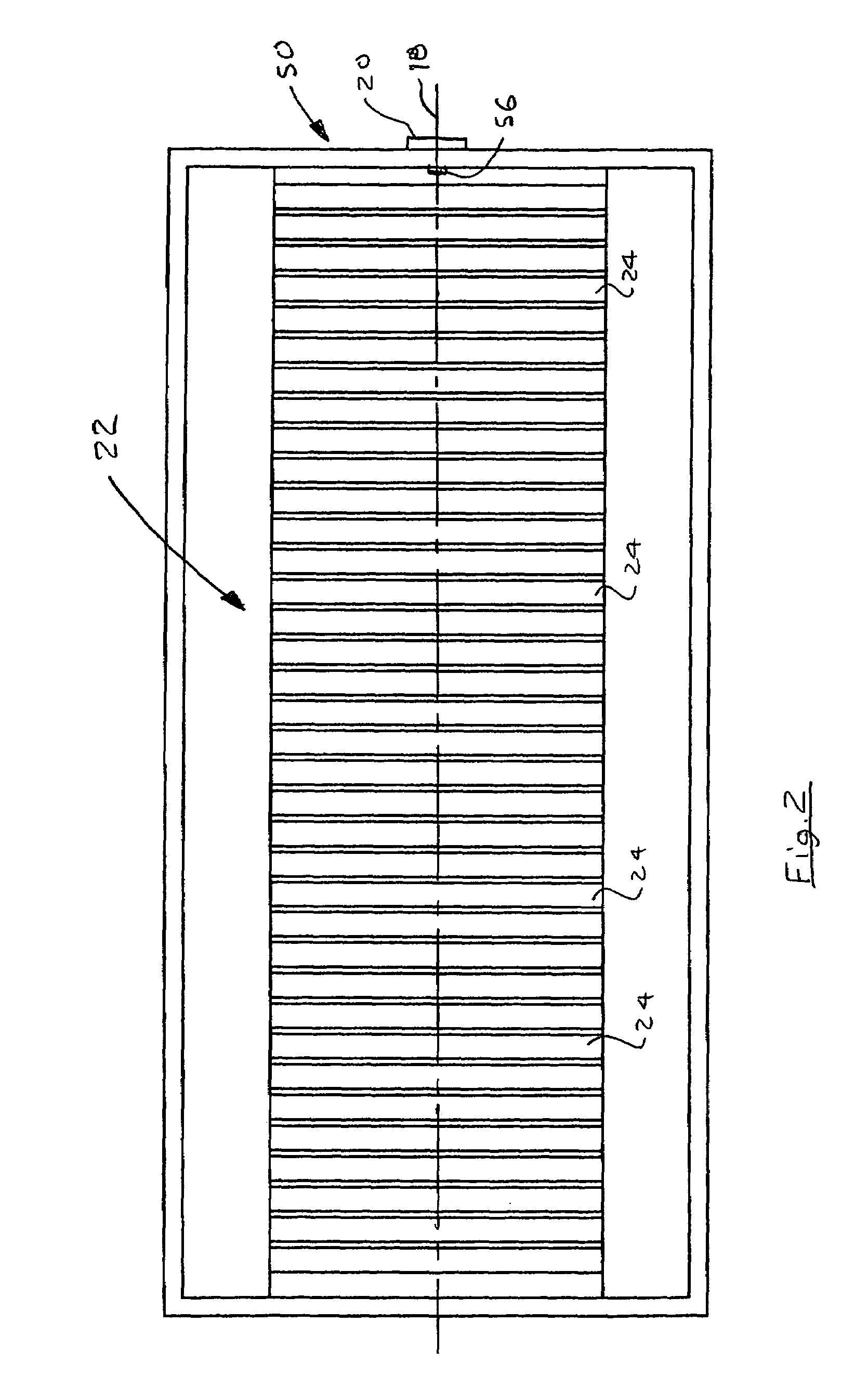Random multi-stage automatic case sealer
a case sealer and random technology, applied in the field of box or case sealers, can solve the problems of box jamming, inability to determine the optimum position adjustment, etc., and achieve the effect of higher speeds
- Summary
- Abstract
- Description
- Claims
- Application Information
AI Technical Summary
Benefits of technology
Problems solved by technology
Method used
Image
Examples
Embodiment Construction
[0017]Referring to the drawings, a preferred embodiment of a case sealer according to the present invention is generally indicated in the drawings by reference numeral 10. Case sealer 10 includes a frame 12 mounted on casters 14, so that the case sealer is easily transportable or movable from one packaging line to another. Retractable feet (not shown) may be threadably mounted in frame 12 to engage the floor and make case sealer stationary, if desired. Alternatively, casters 14 can be of the locking type, for the same purpose. Frame 12 has a longitudinal axis 18 (see FIG. 2) which indicates the direction in which boxes or cartons or cases travel to be closed and sealed shut in case sealer 10.
[0018]Case sealer 10 is normally located adjacent to a packaging line (not shown) to close and seal, one at a time, filled boxes received from such a packaging line. However, boxes or cartons could be manually placed on case sealer 10 if desired. Where the cases are received from a packaging lin...
PUM
 Login to View More
Login to View More Abstract
Description
Claims
Application Information
 Login to View More
Login to View More - R&D
- Intellectual Property
- Life Sciences
- Materials
- Tech Scout
- Unparalleled Data Quality
- Higher Quality Content
- 60% Fewer Hallucinations
Browse by: Latest US Patents, China's latest patents, Technical Efficacy Thesaurus, Application Domain, Technology Topic, Popular Technical Reports.
© 2025 PatSnap. All rights reserved.Legal|Privacy policy|Modern Slavery Act Transparency Statement|Sitemap|About US| Contact US: help@patsnap.com



